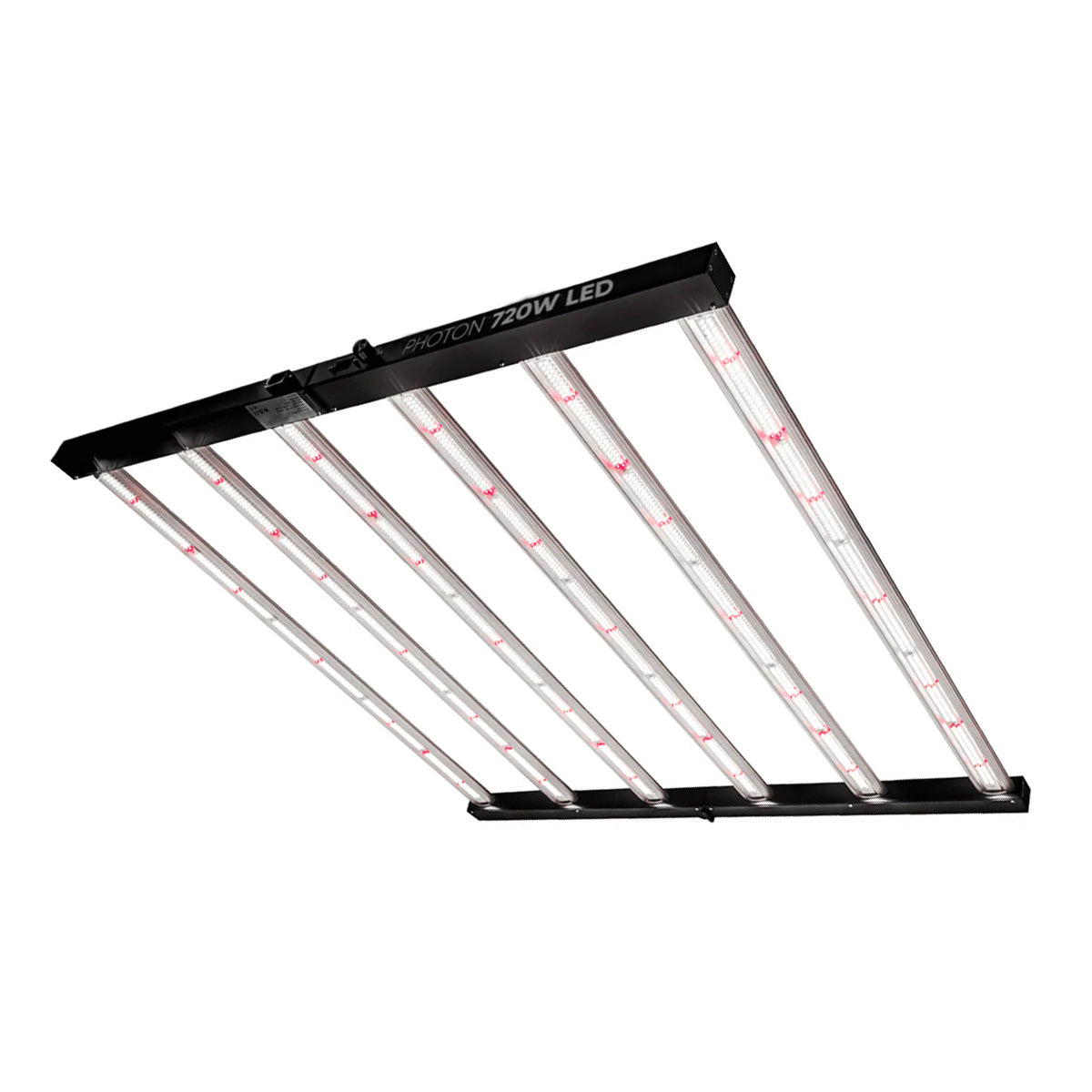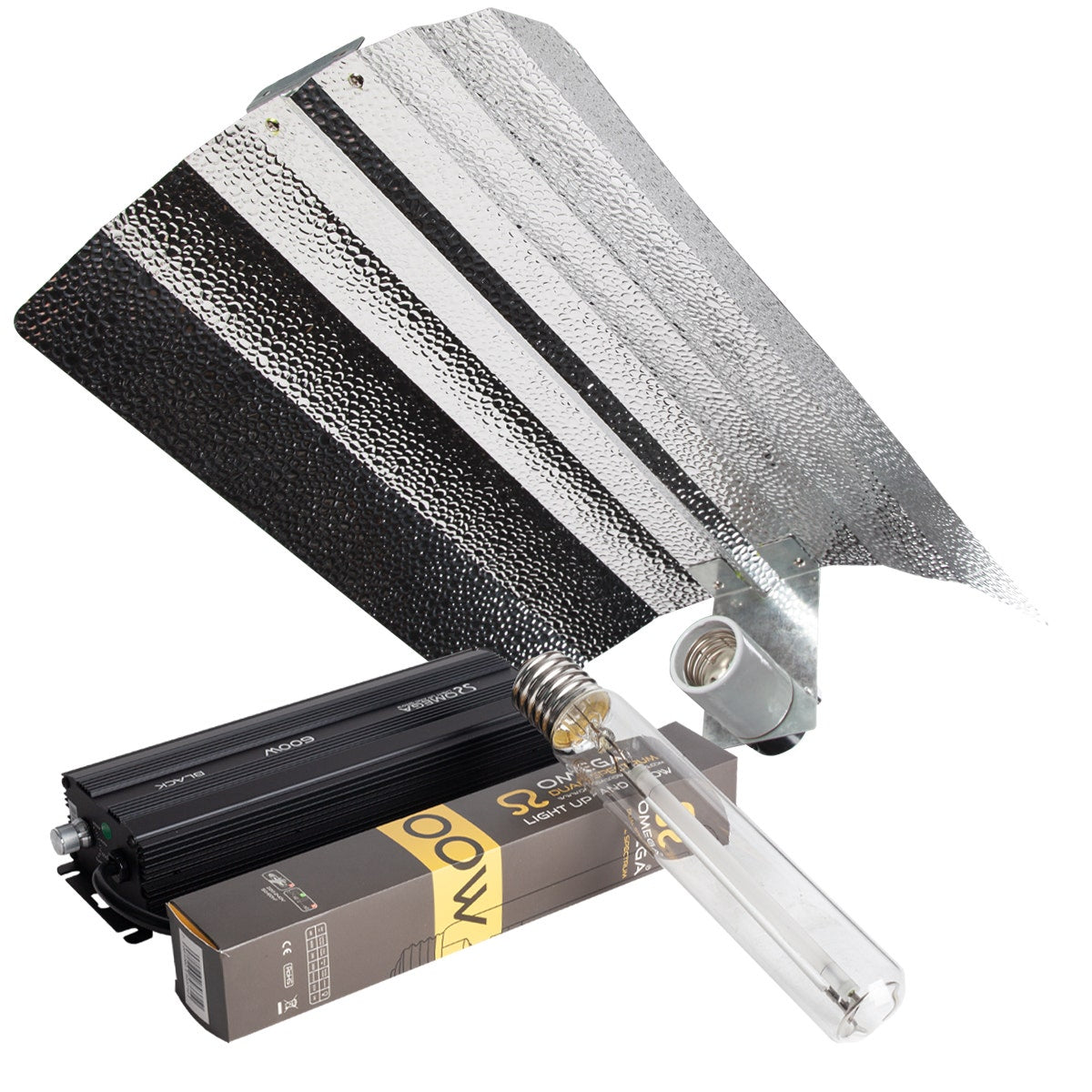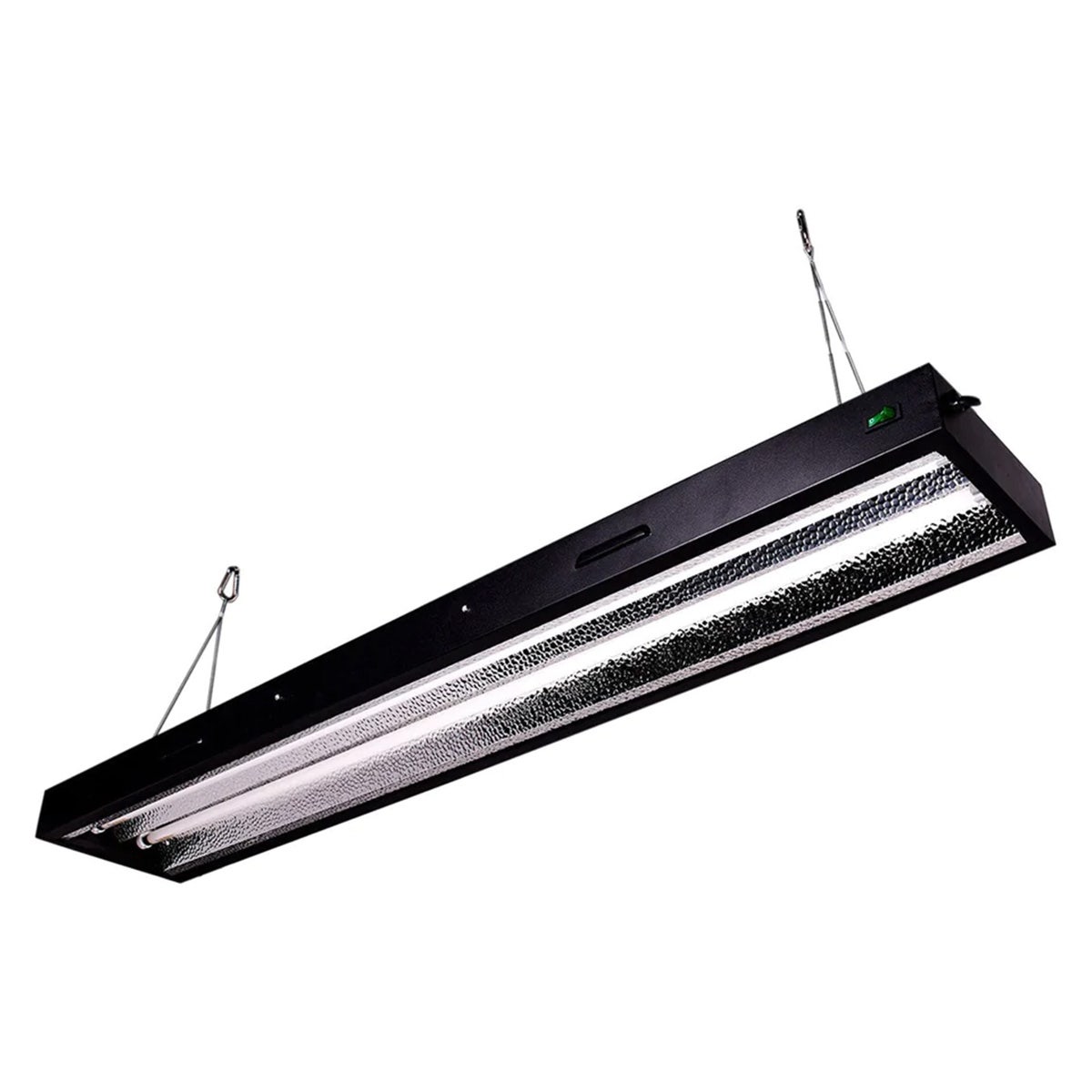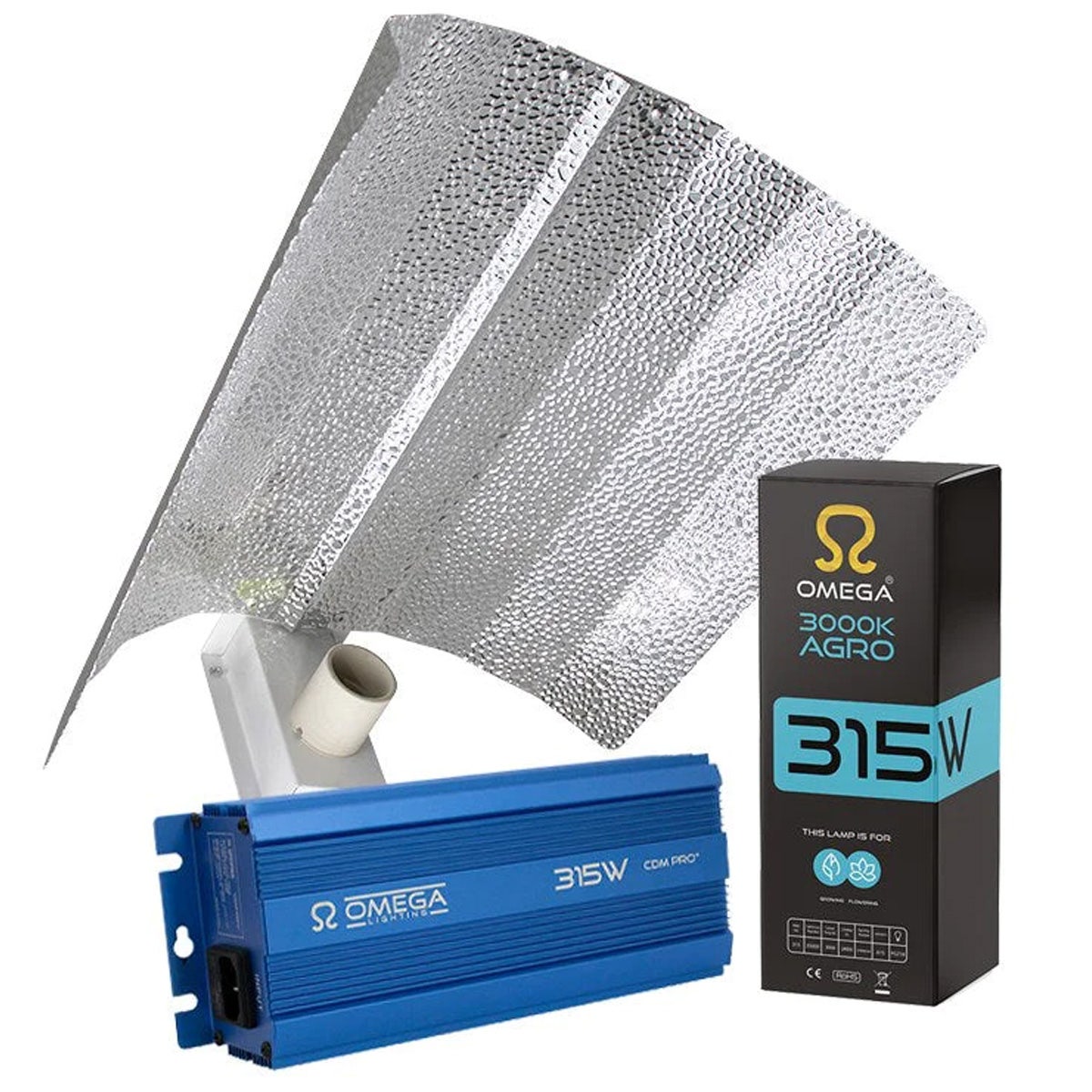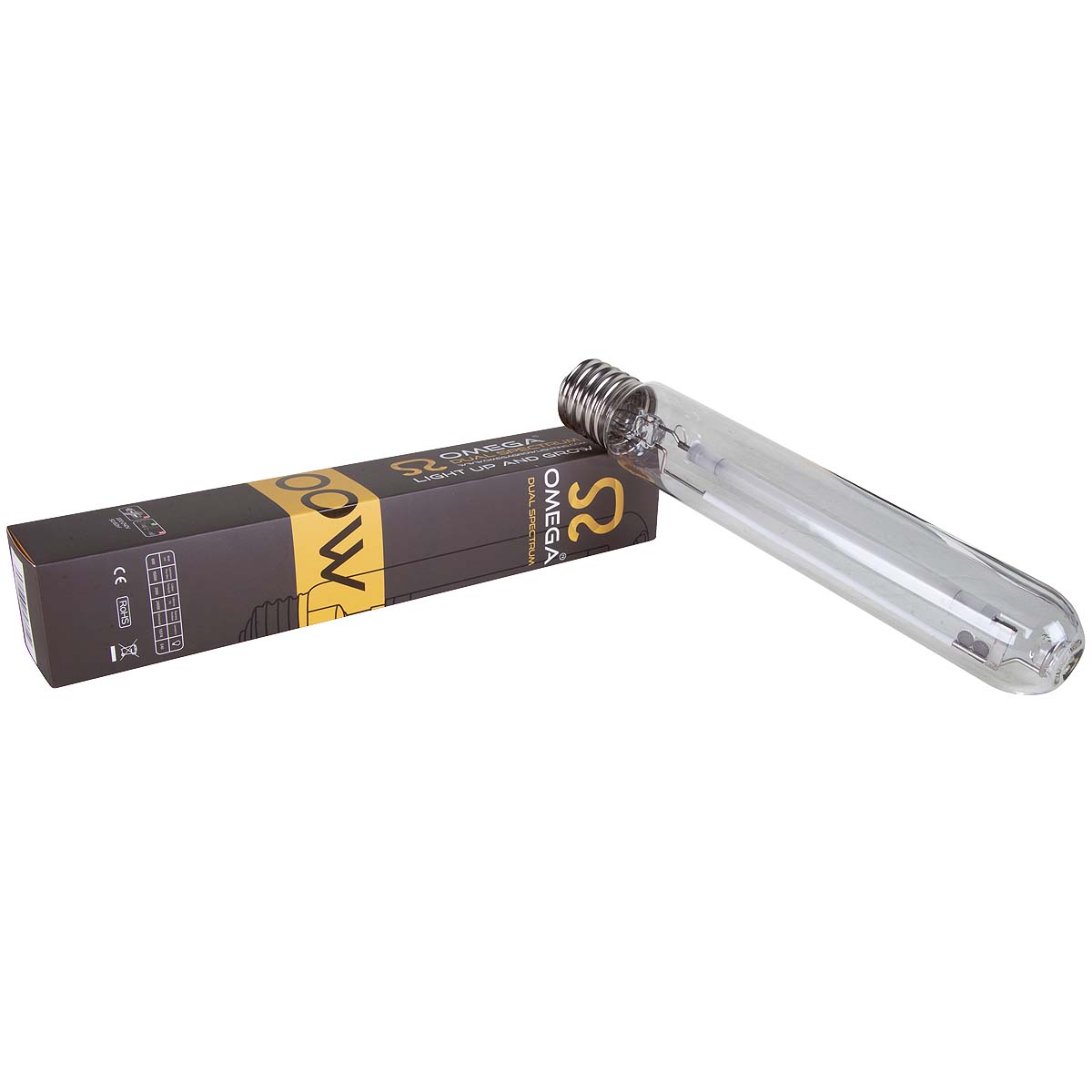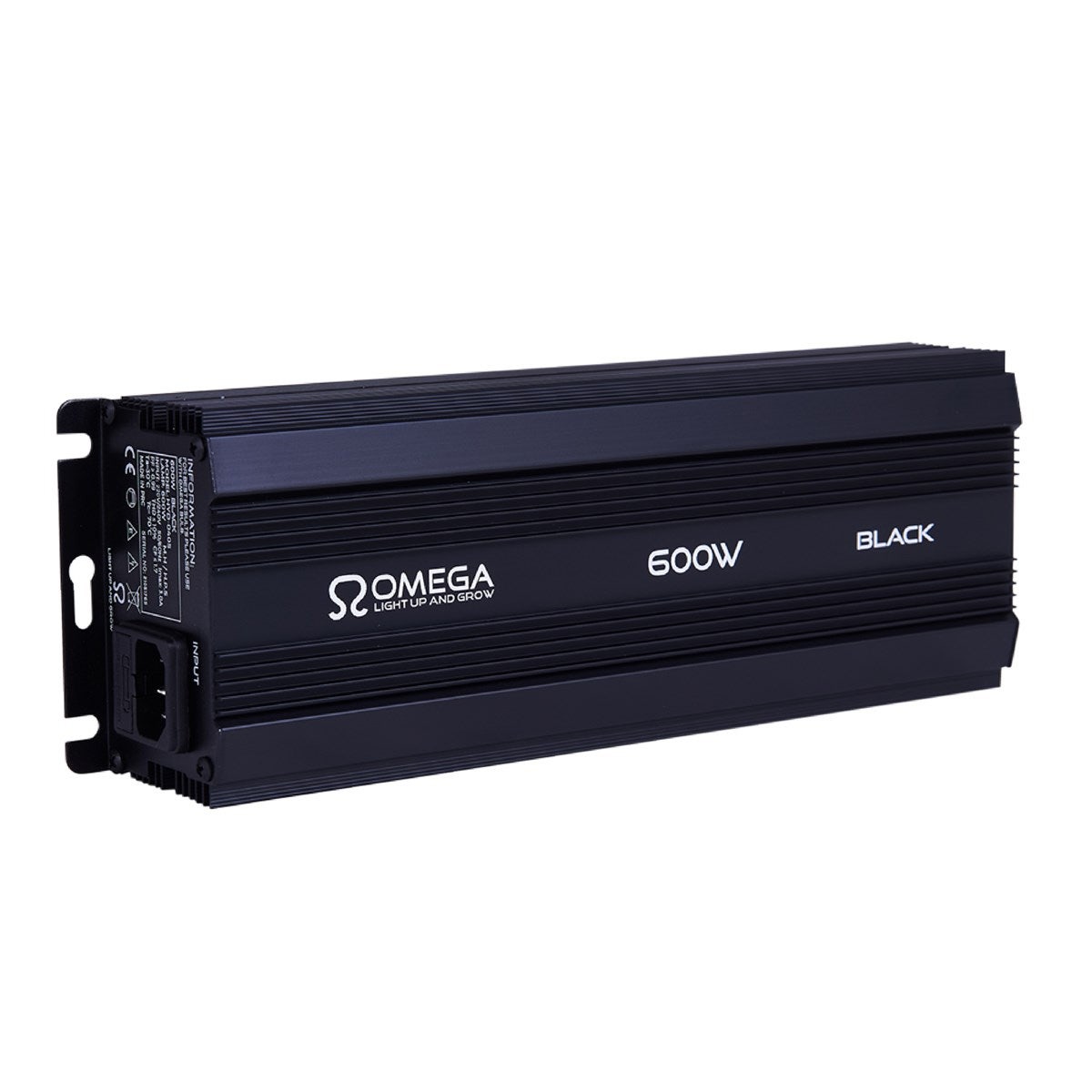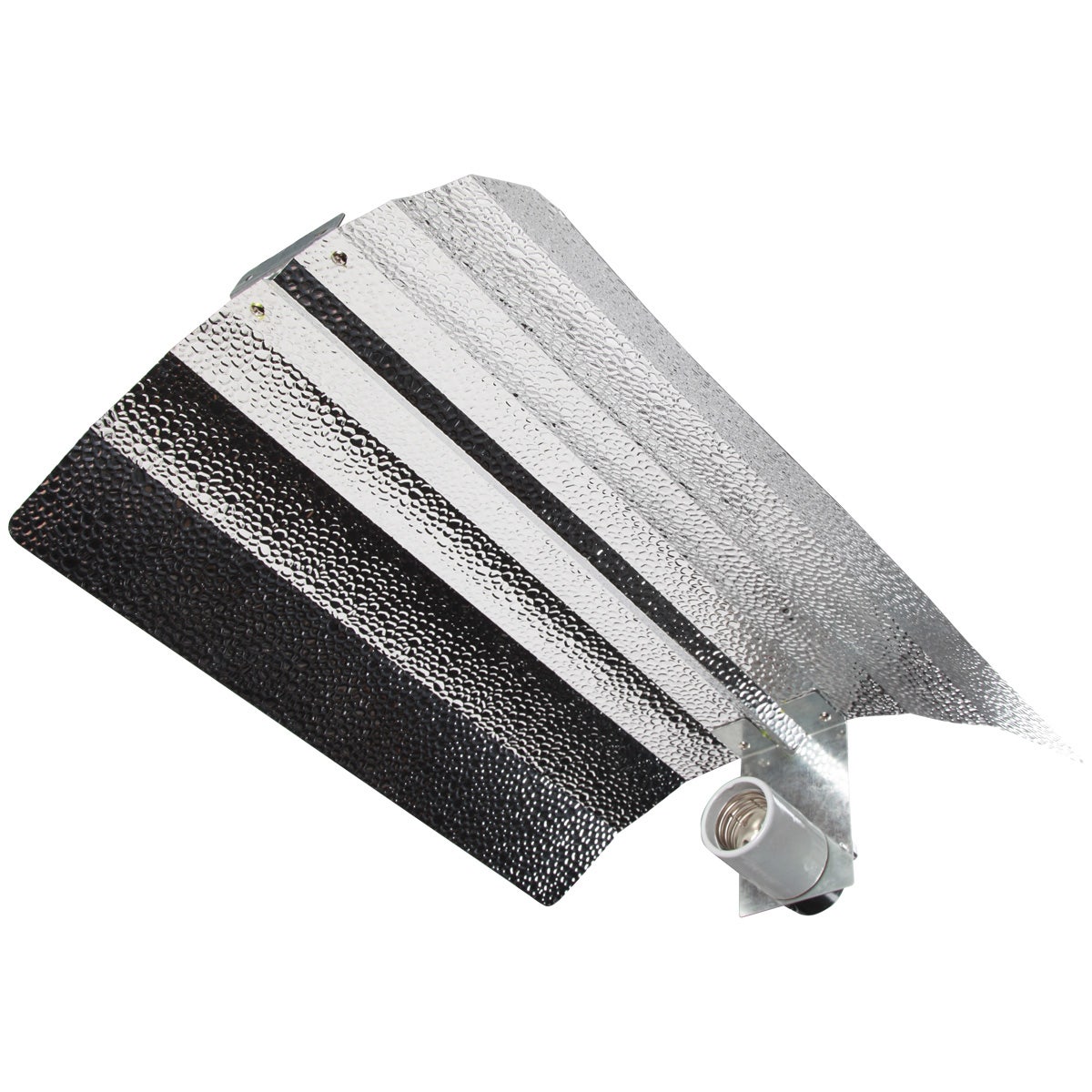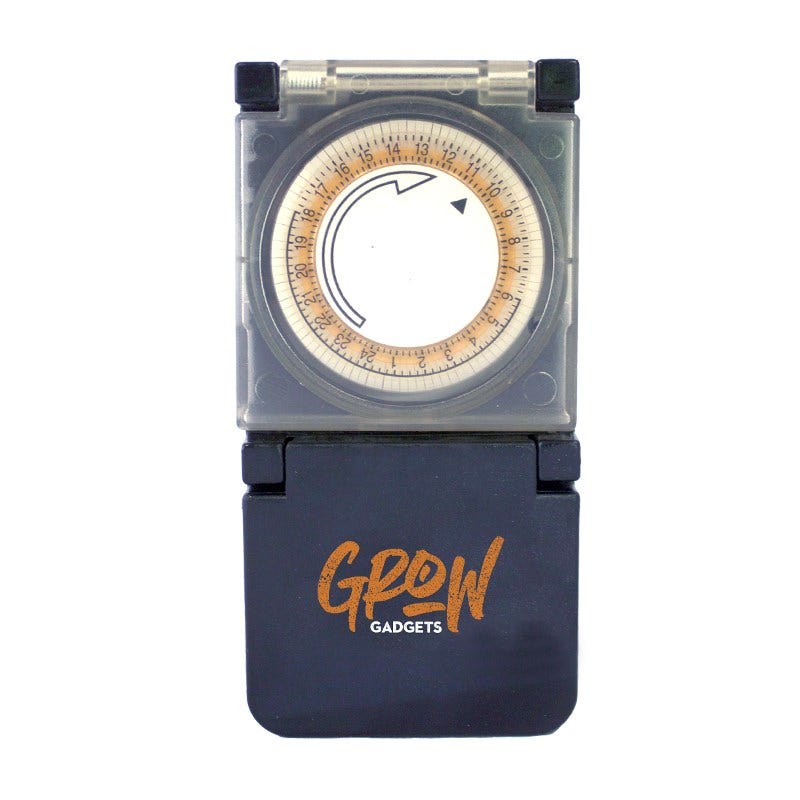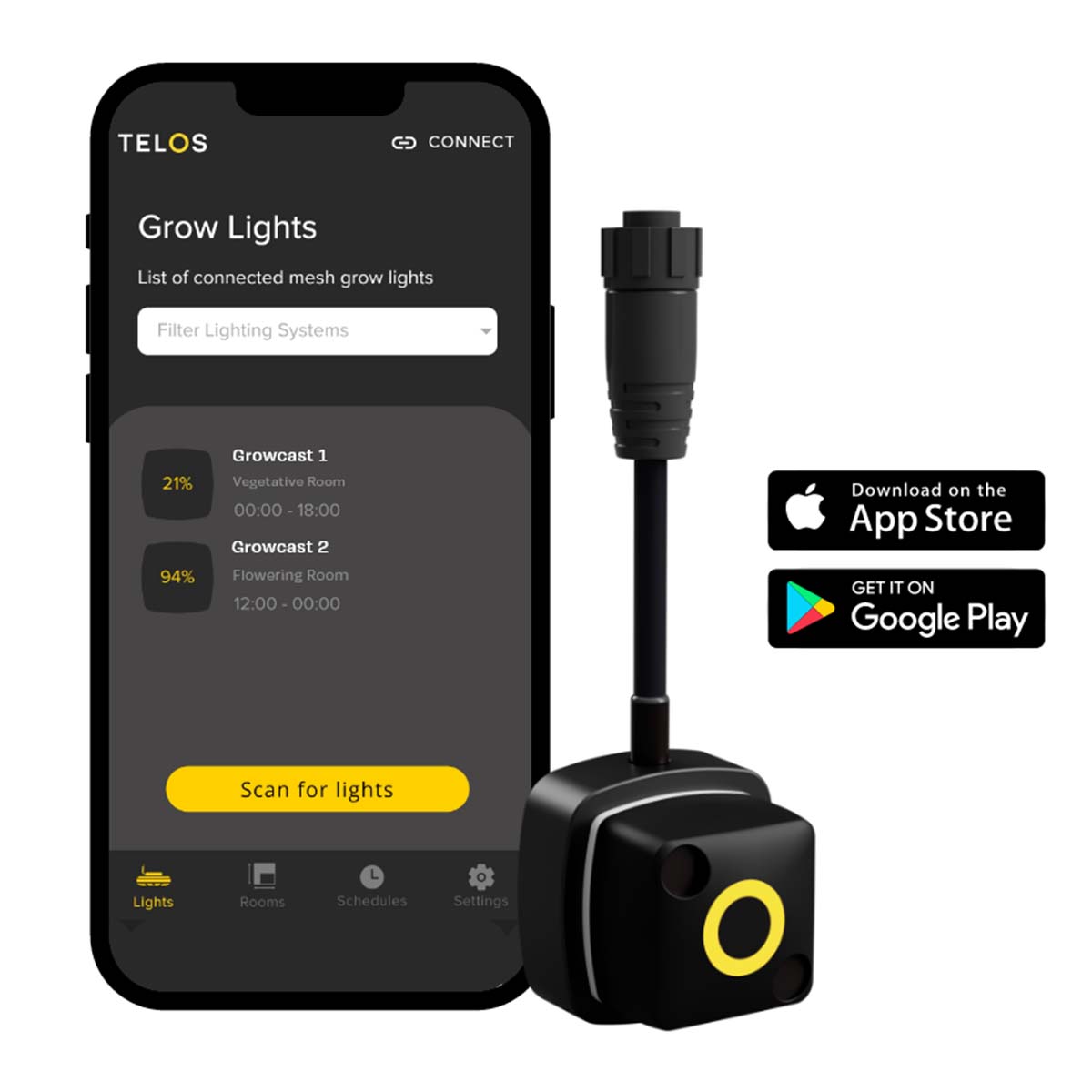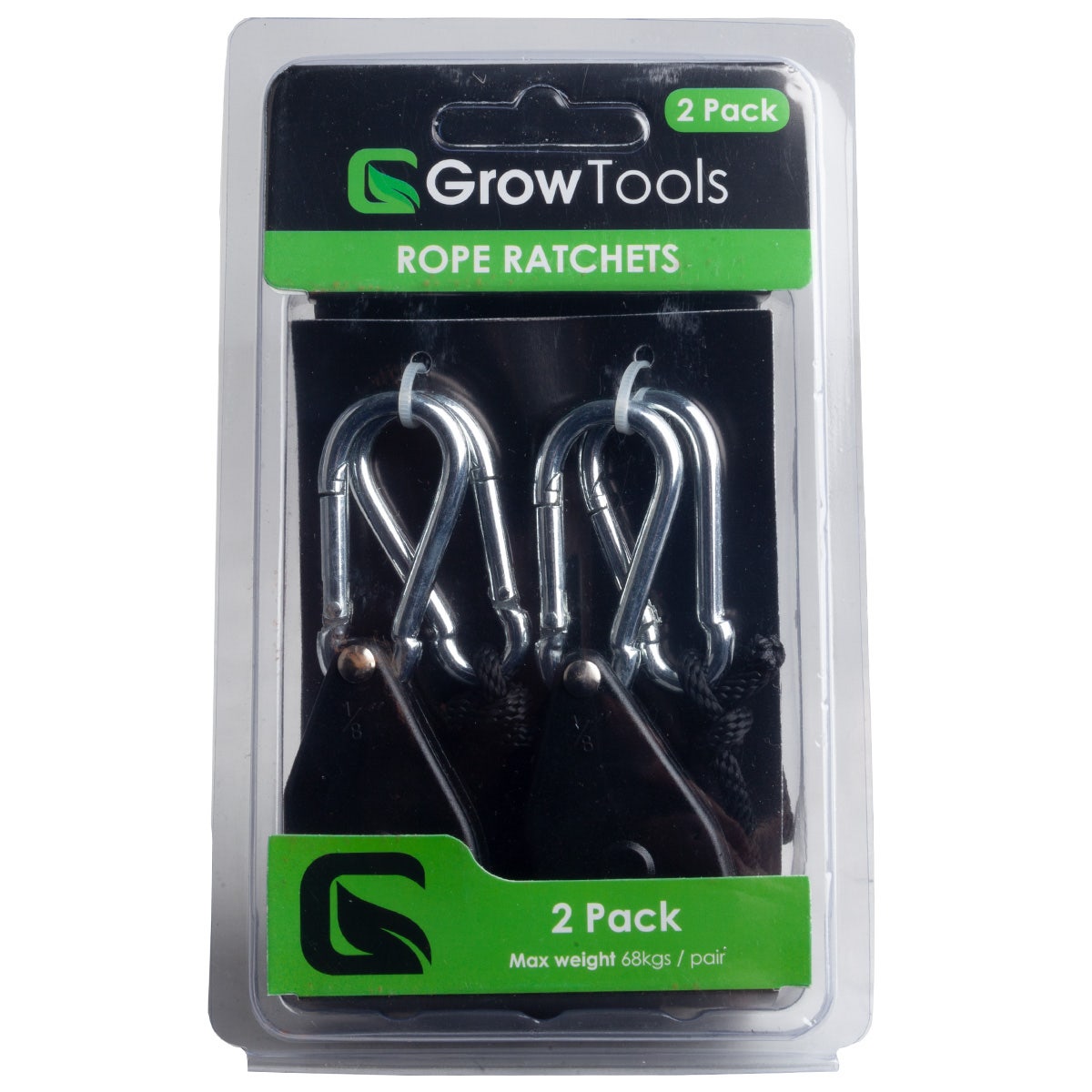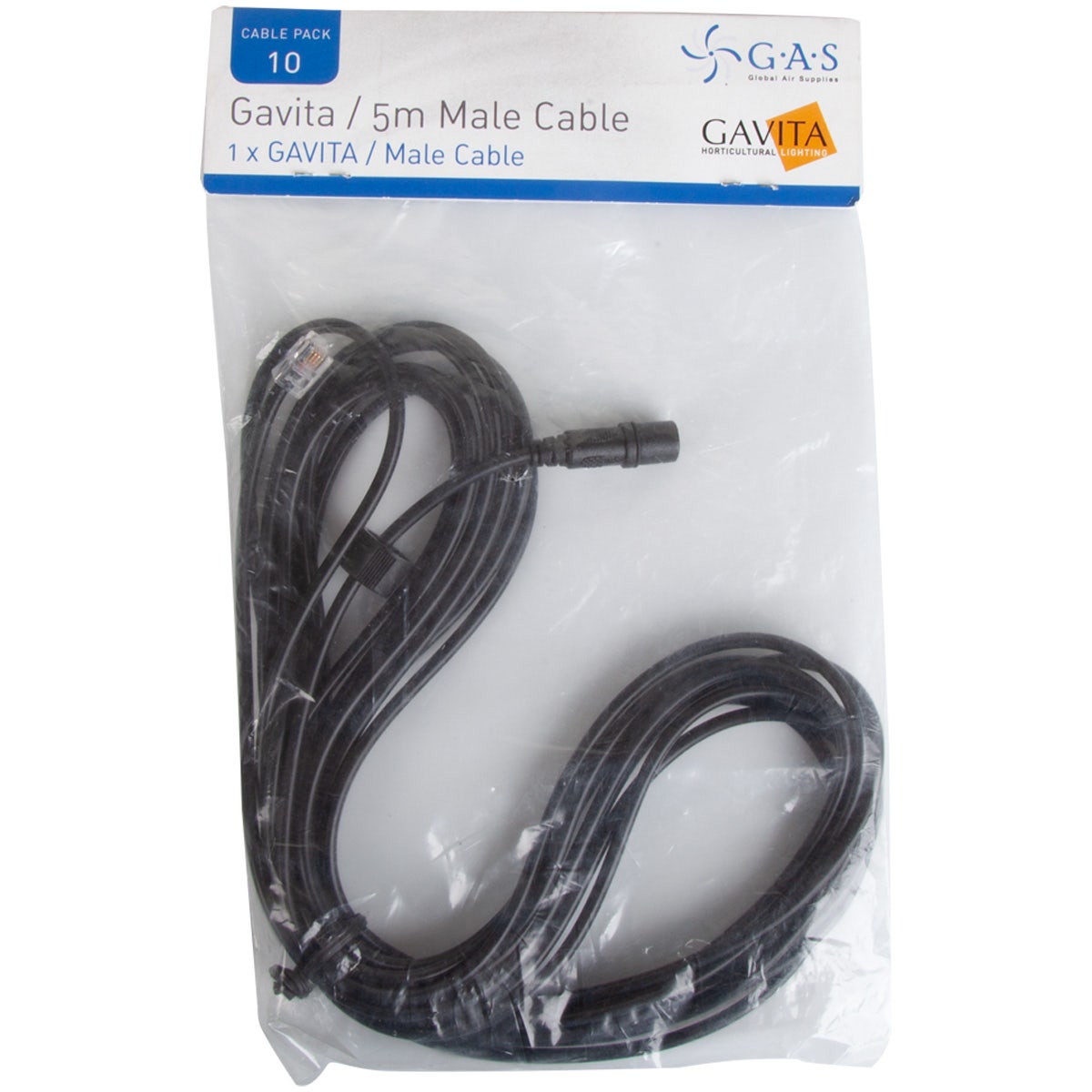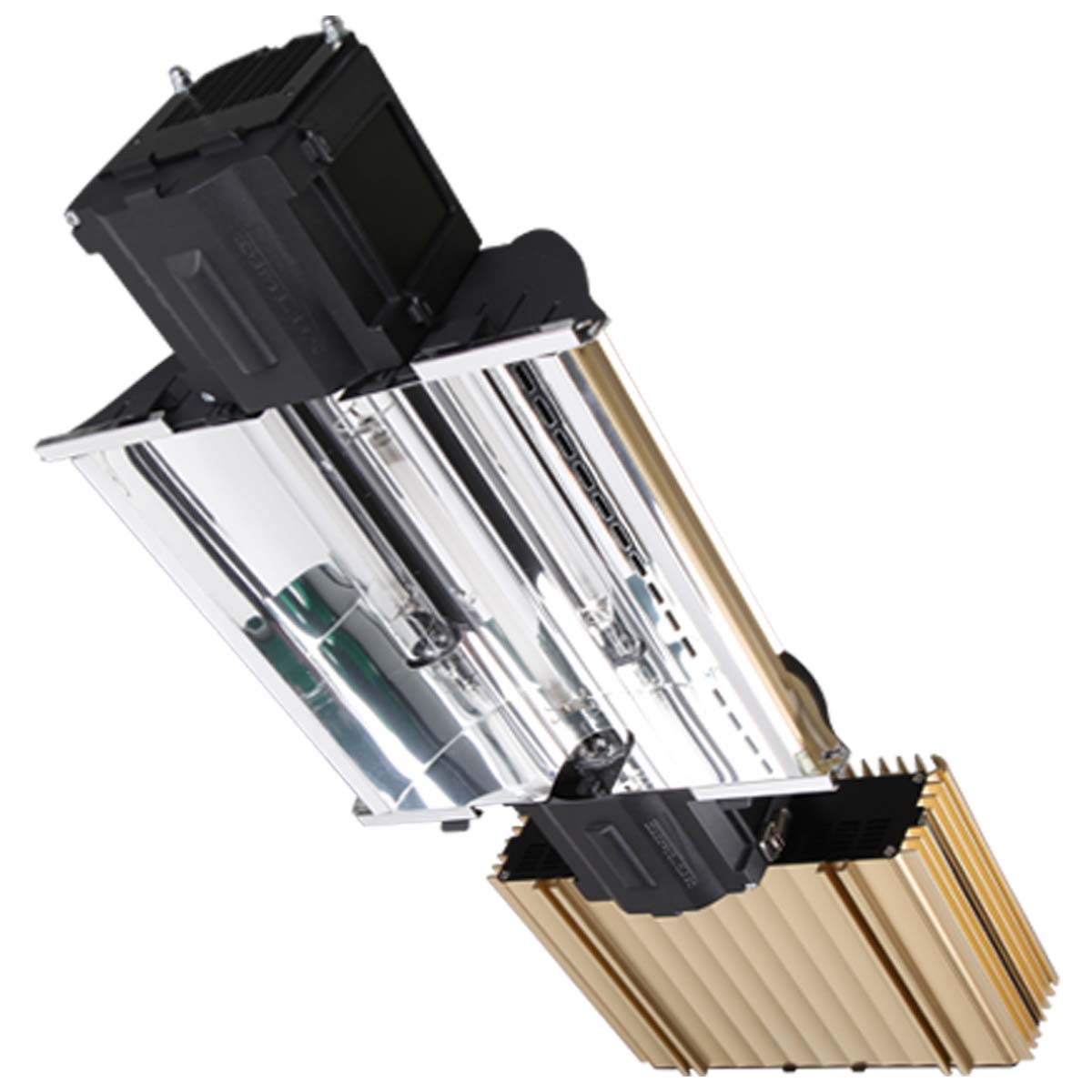Grow Lights
The UKs best grow light selection
If you need lighting for growing plants, you've come to exactly the right place. We offer a full range of grow lights, from budget 600w kits to the latest in LED technology. With prices starting as low as £47.95, you can get growing easily. One Stop Grow Shop also offers a huge range of grow lamps and reflectors alongside controllers, contactors and timing gear, as well as other accessories.
For successful indoor growing, it is essential that plants receive adequate light from a grow lamp or lighting fixture. Even the productivity in sunny glass greenhouses can benefit from supplemental grow lights. Cloudy days can be dull and gloomy and during those times plant growth will be limited by the amount of bright, quality light that plants recieve.
If you use a grow tent then (to get the biggest, highest quality crops) you'll need to make sure that your plant grow light penetrates the canopy, providing plenty of light to every square inch of grow space. There are several options for additional lighting. From Omega LEDs to traditional HPS fixtures, there's something for everybody.
About Plant Grow Lights
There's are different types of hydroponic lights. Quite simply, plants need light to grow. The job of a grow light is to provide the correct kind of light to bring natural light to your indoor garden.
- Plants photosynthesise and grow when they are provided with PAR light (Photosynthetically Active Radiation).
- PAR is light with wavelengths between 400 nm (nanometres) and 700 nm and it is measured in µmols (micromoles).
- A micromole is a certain quantity of something, in this case, photons. A whole mole is a huge quantity of photons (roughly 6.02 x 10^23, called Avogadro's Constant) and it is why we usually talk in terms of millionths of a mole (a micromole)
- The intensity of PAR light is measured in µmols per second per square metre (µmols/sec/m2).
- The efficiency of a grow light is how much light it produces for a given amount of electrical energy that it uses. It is measured in µmols/Joule (1 Joule of electrical energy used per second is equal to 1 watt).
Why is it Important to Replicate Nature in Your Indoor Garden?
When you set up your indoor garden, it's important to recognise that indoor plants need everything they'd need in nature. Indoor gardening is about two things; providing your plants with an environment they'd receive out in the wild, whilst also providing your plants with the correct type of light. The sun gives off an array of different spectrums, from blue light which helps your plants to grow strong in the vegetative cycle to the red light needed to power big flower growth. Mimic the sun inside your indoor grow room and your plants will thrive! LED light is a favourite amongst the best grow lights for indoor plants, and will provide everything they needed to thrive from seedlings all the way to harvest. You can achieve this with having a good mix of red and blue light, and balancing that with a light wattage which suits your grow space. We'd recommend growing from the start with full control and go with something adjustable like an LED light. Your plants will thrive!
Top 5 Grow Lights
- Omega Black 720w LED - the BEST budget LED we have, the Omega Black brings you insane performance for under £400, making it our stand out from the competion.
- Omega Infinity 3.0 Pro 600w LED - if you're looking for a premium LED grow light, the Infinity ticks all the boxes with its 3.0 µmol per watt of electricity (1890 µmol/s ppf) output, making it the most powerful LED grow light in our arsenal!
- Omega Clone Strips - when growing cuttings on a large scale, these lights are perfect for the job.
- Omega Spectra LED - Omega Spectra grow lights use quantum board technology to squeeze lots of power into a very small unit.
- Omega 600w HPS Grow Light Kit - the 600w Omega HPS Kit is a fantastic budget option for those getting setup on a budget. Whether you're growing under one light or fifty, Omega HPS Kits give you decent yields at low price points.
Here's a Run Down of the Different Types of Grow Lights:
LED Grow Lights
This type of plant grow light has progressed a huge amount in recent years. Early LED grow lights were quite inefficient and the spectrum they emitted was a mixture of red and blue (sometimes nicknamed blurple). Thanks to huge advances in LED grow light component technology and a better understanding of the areas of the light spectrum that plants really need, they have overtaken HPS grow lights in terms of 'yields per watt of electricity', and crop quality has improved considerably.
The best LED grow lights are built using white LEDs and, usually, a few extra red ones. There's plenty of blue in the spectrum which keeps plants short and stimulates essential oil and resin production. The cyan, green and yellow also assist with final quality, plant structure and health. The extra red in the full spectrum makes these LEDs produce the goods.
LEDs run cooler than HPS grow lights, too. Although they require a bigger initial outlay, they pay for themselves due to reduced power requirements and their lifespan of at least 5 years (with no lamps to change out during that time).
Full spectrum light has taken the industry by storm, making LED grow lights our favourite type of grow light. This spectrum fuels rapid plant growth right the way through the grow and bloom cycles. The full spectrum light emitted by LEDs is great for keeping your plants shorter in the veg stage, making your indoor garden nice and compact and creating a much more even canopy. Full spectrum light also makes spotting pests much easier. With other types of grow lighting, it's much harder to spot them.
LED grow lights are definitely the way forward; the light spectrum they produce delivers much greater rates of plant growth than traditional fixtures (such as HPS or metal halide), and the light spectrum of LEDs cannot be beaten. The wattage of LEDs can vary, from 200w all the way to 1030w, so there's an LED to suit any grow tent or grow area. Maxibright 200w fixtures are perfect for seedlings and cuttings, whilst the 1030w lights are perfect for a 1.5 x 1.5m grow tent. The low heat levels produced by these grow lights also makes it really easy to grow indoors over the summer months, giving you maximum growth rates, lower temperatures and maximum efficiency during the hotter periods.
When flowering, you can get much closer to your plants than when using other types of lights (metal halide or high pressure sodium) due to the cooler running temperatures. This allows you to really push your plants while flowering, making your yield higher than when using HPS (high pressure sodium) or other types of grow light.
What are the Main Things to Consider When Choosing an LED Grow Light?
- The grow space you're looking to use the light in (certain LEDs have more compact designs)
- Whether you're using it in a dedicated area for seedlings or you're looking to grow all the way through
- The power output you want to be aiming for (energy consumption)
- How efficient you want your LED grow light to be
- Do you want full spectrum of light?
- Are you growing in a compact area?
- How much light will your area need?
Propagation LED lights
The Maxibright 300w is our go to propagation light of choice; it's perfect for indoor gardening enthusiasts who want to grow from seeds and get their plants ready for vegetative growth. Maxibright have a perfect balanced spectrum, and the 300W fixture has enough red light / blue light for young plants to grow strong and healthy the light source mimics the sun. Seedlings don't need as much wattage as the bigger units, and the 300w is adjustable, meaning you can turn it down if you need to initially. Grab yourself some rope ratchets too and make sure the fixture isn't too high, you can either move it up, or turn it down with the adjustable dimmer provided. Need help growing seeds? The wet paper towel method is simple and your seeds will love it!
Veg LED Lights
The Maxibright 480W is the perfect middle ground for a veg kit. The direct light provided by the Maxibright 480w will give your indoor plant everything it needs to grow healthily using natural light.
When your indoor plants are bigger, we'd recommend moving them to a bigger tent to maximise their growth. The 480w fixture is adjustable and allows you to give your plants hours of light with its 70,000 year lifespan. These units are on of our favourites at One Stop Grow Shop and will fuel your vegetative growth with its blue light. Indoor plants need to have all of the conditions they would when outside in a natural environment, so keep your environment perfect and your plants will be happy! If you want a lower wattage veg light, the Telos range is also a fantastic unit!
Flowering Lights
The Maxibright 660w Pro Daylight LED or Maxibright 1030W Pro Daylight LED the perfect light to fuel your indoor grow. As a light fixture goes, these two are our favourites and will give you a full spectrum light that your plants will love. These units are highly efficient, saving you energy whilst keeping temperatures in the natural area for your plants to thrive. They come with a dimmer, and are adjustable from 0 - 100% when used with the Maxibright controller. The controllers also give your plants hours of light and natural lighting patterns with the sunset/sunrise mode, making them fully adjustable to get the most out of your indoor grow. When looking for a great flowering light fixture, you also want to consider which units will fit into your grow room; if you're in a 1.2m x 1.2m, use the 660w, if you're in a 1.5m x 1.5m, use the 1030W! This wattage may seem like a lot, but when compared to traditional HPS fixtures, they run much cooler and are more energy efficient with their natural spectrum (they'll be on for hours so you want maximum efficiency and cool temperatures to help maintain your indoor grow room). The spectrum has plenty of red and blue in it, meaning if you wanted, you could go from veg all the way up to the harvest.
HPS (High Pressure Sodium) Grow Lights / Grow Lamps
This is a type of HID grow light and used to be the standard type of light for flowering and fruiting. They consist of a grow lamp, ballast and reflector. They work by exciting a sodium gas inside an element (arc-tube) inside the grow lamp. The light the grow lamps emit has an orange-red colour to it which is great for producing big yields. A 600 watt model generally covers an area of 1.2m x 1.2m while a 1000 watt model is better suited to a 1.5m x 1.5m area. There's quite a few different models of reflector. The better the reflector, the more light it will reflect back down onto the garden, and the more evenly it will light the canopy. There's a choice of cheaper magnetic ballasts or more efficient (and cooler) digital ballasts which usually boast a dimmer and boost facility. HPS lamps go from very cheap to very expensive. The key to them is that you get what you pay for. The better HPS grow lamps produce more light and have a slightly broader spectrum. The high frequency 400 volt HPS lights, such as by Dimlux and Gavita grow lights, are the very best types of HPS and provide a step up from the standard types in terms of efficiency (light output per watt) and spectrum. The downsides to HPS grow lights is that they run very hot (the lamps run at several hundred degrees Centigrade ,ºC) and they produce infra-red. The result is that the grow space can become hotter than the ideal temperature for growing plants. HPS grow lamps are also less efficient (produces less light per Joule of electricity) than the recent crop of premium LEDs. If you're using HPS, use a philips lamp for maximum growth.
CDM / CMH Grow Lights
CDM grow lights (Ceramic Discharge Metal-Halide), sometimes called CMH (Ceramic Metal Halide) are the modern version of the old HID MH type of light which is less popular these days. CDM grow lights produce full spectrum light and produce high quality crops. Like HPS light, they use an element (arc-tube) filled with a gas that is excited by the power provided by a balllast. They are often used alongside HPS grow light to fill in the spectrum where HPS grow lights lacks. They are still HID lights, though, and because of this they do produce quite a lot of heat. Many growers use one 315w grow light between 2 600w HPS grow lights. Many growers swear by them. Remember that CDM grow lamps do not have an E40 connection like HPS or MH lamps. Instead they have a bayonet fitting which means that you need to get a reflector with the correct fitting, or use a converter with that style of grow light. CDMs are very compact and come in a few different wattage options. We'd recommend using them inbetween two HPS lights to maximise your plant growth (you'll also add a blue spectrum into your grow area with the CDM lamp).
Metal Halide (MH) Grow Lights
These are like the old version of CDM HID grow light. The element in an arc-tube is filled with a metal halide gas. A ballast, grow lamp and reflector is required just like HPS. They produce a blueish white light that makes them great for vegging plants under. Unfortunately, they aren't very efficient and they produce a lot of heat (even more than a similar wattage HPS grow light). We'd recommend you go for LED or CDM light instead of MH as the full spectrum gives you a much nicer output which your plants will love.
Fluorescent Grow Lights
Fluorescent lights are usually the tube type or the CFL (Compact Fluorescent Light) type grow lamp which look like a large version of the household type. Although fluorescent lights look like they they produce white light, the spectrum that fluorescent lights produce is rather uneven, and they relatively inefficient. The grow light produced by fluorescent lights don't tend to penetrate the canopy very far so they are not very good for lighting young plants but they are good for raising cuttings and seedlings that prefer a gentle, diffuse light. Fluorescent lights run a little warm but usually not so much that it creates problems. Again, we'd suggest using an LED light or CDM light instead of traditional fluorescent grow light. Fluorescent lights are also harder to maintain than other types of grow lights as the lamps can be very fragile. Need a hand with our fluorescent lights? Give us a call!
LEP - Light Emitting Plasma Grow Light
These are a curious type of light technology. Basically, a small capsule of a mixture of gases is excited by a magnetic field which is produced by a magnetron (as found in microwave ovens).The gas turns into a plasma and emits a bright full spectrum grow light. The spectrum can be "tweaked" by altering the recipe of the mixture of gases inside the capsule. LEP light is great for use alongside HPS to supplement the narrow spectrum. The standalone versions can also be used to successfully veg plants. LEP grow light also produces some ultraviolet (UV) light which stimulates a plant' production of terpenes, essential oils and resins, improving the quality of the final crop. When used as supplemental lighting alongside a HPS grow light, one LEP plasma grow light in-between two 600w HPS lights produces big crops of very high quality. Although CDM / CMH lights have taken over their roles in recent years, plasma light are still a very viable alternative, and they produce much less heat too. LEP is relatively old technology, and the output / power consumption doesn't give you what other types of grow light can offer. Lights such as LED will give you energy savings, better output and it fills a grow space evenly with the perfect footprint. LEDs are also more compact and give you much better bang for your buck. The light produced by LED is also full spectrum, meaning there's no reason to really use an LEP light in this day and age. Lights will constantly be evolving, and LEP grow lights have had their day in our opinion! Want more growth from your plants? Go LED!
Looking for a grow light, tent and extraction? Click here for Full Grow Tent Kits
